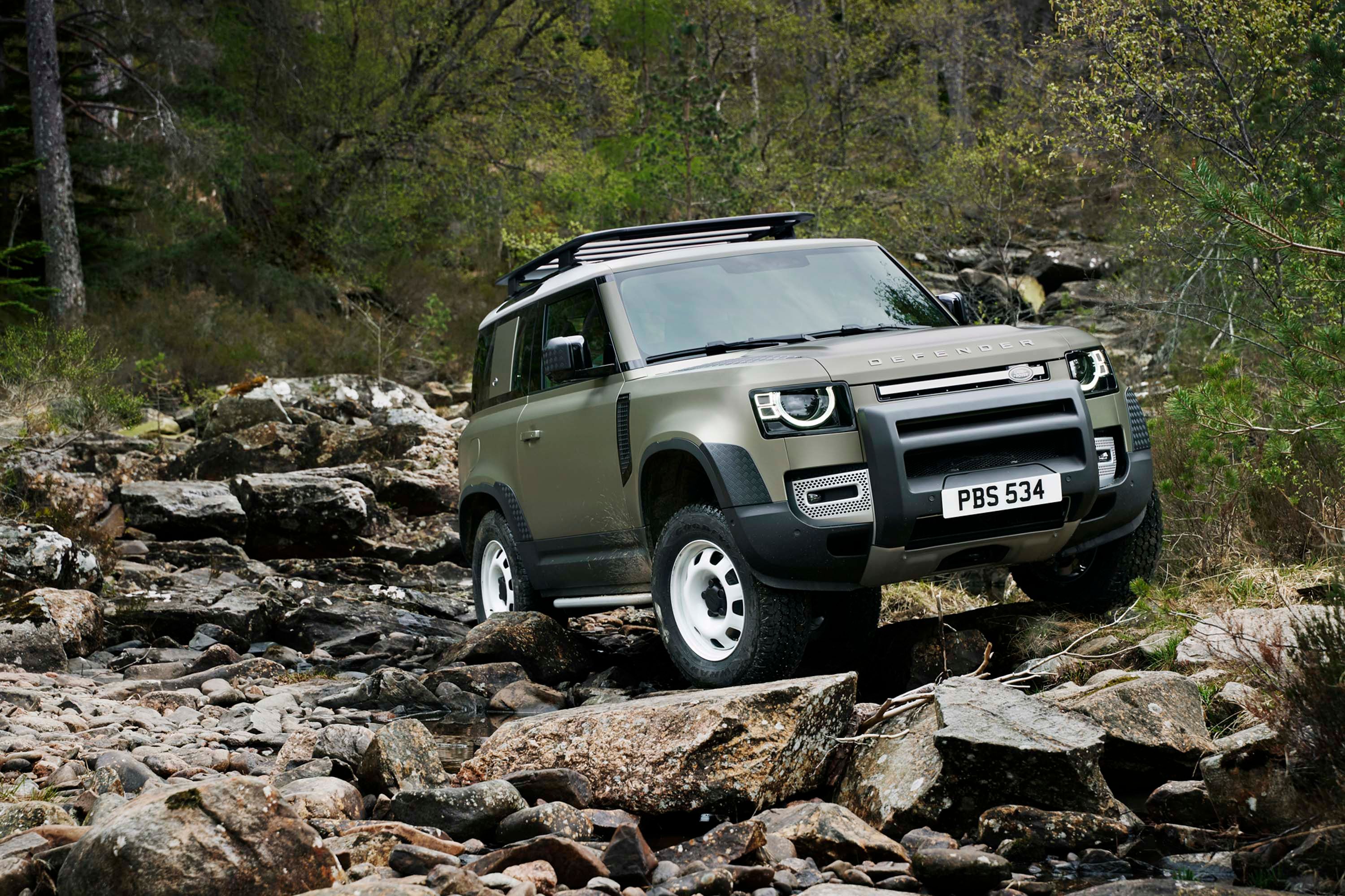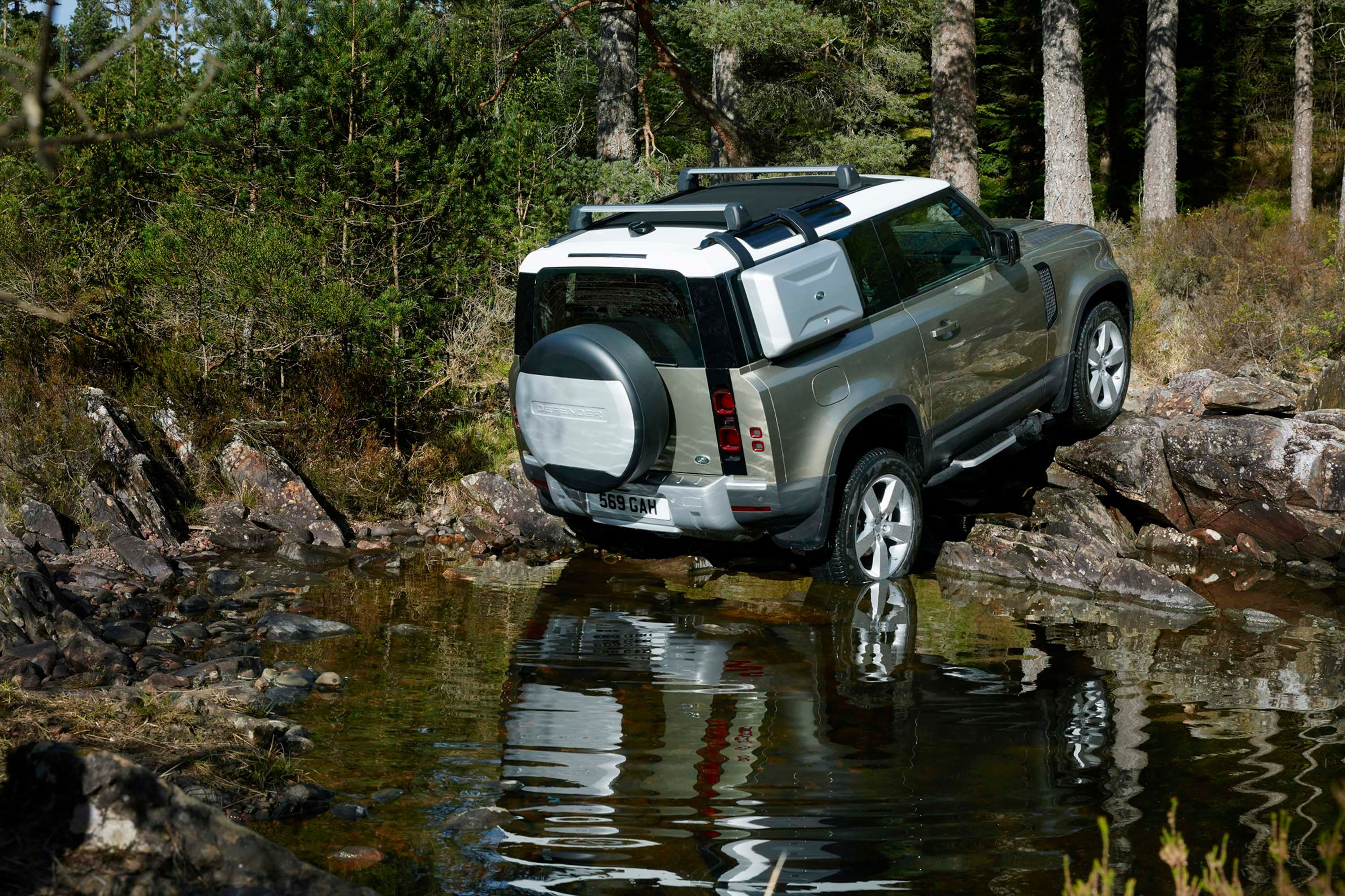Land Rover announced that it was working on an all-new Defender way back in 2011, when it revealed the DC100 concept. At the time, the design study made many traditional fans of the Defender exclaim that it didn’t preview a vehicle they’d be interested in buying, so Land Rover actually made a second concept in 2016, called LR1, but it didn’t show it to the public - it was an evolution of the DC100 and it actually was the basis for the recently unveiled production Defender.
It's plainly clear to see that a lot of the DC100’s design DNA stuck and while there have been subtle changes made to the design itself, it still looks a lot like the 2011 concept. This isn’t a point Land Rover’s design boss, Gerry McGovern, agrees with necessarily, as he explained to Autocar that the DC100 was one of several design proposals for a new Defender since the late 1990s - what was different about the DC100 was that it actually signaled the automaker’s clear intention to make a new Defender.
And now, some eight years later, here we have it, the all-new Defender.
|
|
ids=861691,861692 |
no_overlay=false |
before_label=2020 Land Rover Defender |
after_label=2011 Land Rover DC100 Concept> |
Viewed straight on, the new Defender and the DC100 clearly look like they’re visually related (quite closely, even). Firstly, the shape of the headlight cluster (right down to the shape of the daytime running lights for the LED matrix headlights) is the same, as is the shape of the grille (although its design is different). Sure, the production car’s headlights have surrounds that clearly define their shape, while in the DC100 they kind of meld into the grille and the rest of the fascia, but they clearly bear more than just a passing resemblance.
Looking at both, one thing is clear: neither really looks like the old Defender. They are both desperately trying to maintain the original’s retro vibe, but also adapt it to modern day design trends. The now -classic Defender’s shape was dictated by function, whereas both the new series Defender and the DC100 are styled to look like it, even though they don’t share a single component - the new Defender isn’t even a body-on-frame vehicle any more.
|
|
ids=861693,861694 |
no_overlay=false |
before_label=2020 Land Rover Defender |
after_label=2011 Land Rover DC100 Concept> |
Move to the side of both vehicles, and the Defender vibe is definitely stronger. They may have a more slanted A-pillar than the original, but the shape of the greenhouse is unmistakably that of a Defender, with the flat roof and abrupt-ending rear end.
While scrolling back and forth between photos of the new Defender and the DC100, I at one point couldn’t tell which one was which. Aside from the piece of body-colored trim that blocks part of the rear side window, you do have to take a closer look to tell them apart.
|
|
ids=861695,861696 |
no_overlay=false |
before_label=2020 Land Rover Defender |
after_label=2011 Land Rover DC100 Concept> |
The shape of the greenhouse betrays the visual link between production model and concept from the rear, as well. The design study had cool 45-degree quarter lights in the C-pillars (similar to what the previous production model had, although those were on the same plane as the rear window) and the new series Defender doesn’t, but the overall shape is definitely very similar.
What’s cool is the fact that the new Defender’s rear light cluster design is certainly more reminiscent to that of a concept than the DC100’s. This just goes to show how much changed in the world of automotive design in the space of less than a decade.
The production Defender’s taillights are just plain weird to look at and I’m still struggling to understand why the two bigger elements are placed more inward and the two smaller ones outward - shouldn’t it be the other way around, in order to emphasize the car’s width, make it look planted and stable? There’s no problem with the shape of the lights themselves, but they should be shuffled around a bit and pushed more towards the edge of the vehicle.
|
|
ids=861697,861698 |
no_overlay=false |
before_label=2020 Land Rover Defender |
after_label=2011 Land Rover DC100 Concept> |
Even though Land Rover says the new Defender’s design isn’t necessarily based on the DC100’s, the two are clearly related. Sure, some details have been changed and we’ve now reached a point where production cars look as good as last decade’s design studies, but the fact that they look a lot alike cannot be refuted.
Personally, I think both designs have good and bad parts, and I don’t think the new car’s design is perfect. If you checked out the comments below the original Defender reveal live stream, you would have noticed quite a few many negative opinions about its design - most of these comments have since been moderated into oblivion, but the fact is not everybody is on board with the way the new Defender looks.
But at the same time, I also understand why Land Rover made the new Defender the way it is. It is pretty clear that while the automaker doesn’t want to forget what the Defender’s heritage is about, it wants to move its image away from that rattly old thing you had no problem leaving parked next to the manure spreader on the farm. Sure, the new vehicle will still be usable as a farm runabout, but it is so much classier to look at that you’ll feel quite special getting out of it opposite the trendiest pub in town.
This philosophy is reflected in the way it looks. It’s an approach somewhat similar to what BMW did when it made the first ‘modern’ Mini. That car retained the classic’s ethos (and design), but it bore no mechanical link to it and, overall, it was a much more modern and better vehicle in every single way.
Whether or not it proves to be the best solution remains to be seen (in the new Defender’s sales figures). I mean Mercedes could have replaced the G-Class with a ground-up new model that only looked like it but whose mechanicals were completely different, and more modern, but it didn’t. And the G-Class, even the latest one with its new independent front suspension (that replaces the older models’ solid front axle), still handles like a bit of a pig, it feels top heavy and understeer-y and it’s frankly not that much fun to drive on tarmac.
There was definitely incentive for Mercedes to just replace it with something whose underpinnings aren’t from the 1970s, and the fact that it didn’t and just kept the archaic platform is certainly telling. Land Rover, on the other hand, announced its intention to make a completely new Defender with the DC100 concept, almost 10 years ago, and now that we’re here looking at both, it’s clear the automaker didn’t stray that far from that 2011 concept.
Further Reading
The 2020 Land Rover Defender Has Arrived with New Tricks and Old-School Looks
Read our full speculative review on the 2020 Land Rover Defender SVR.
Read our full review on the 2011 Land Rover DC100 Concept.
Read our full review on the 2018 Land Rover Defender.




